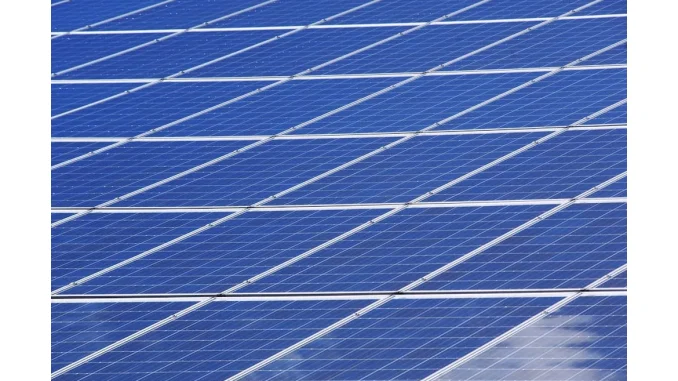
In an era where sustainability stands as a global imperative, green building certifications have emerged as indispensable tools for constructing eco-friendly and cost-effective buildings. These certifications not only elevate a building’s performance and reduce its operational costs but also render it highly appealing to tenants and investors seeking sustainable options. As the drive for sustainability gains momentum, the role of green building certifications in urban planning and development is becoming increasingly significant, influencing both financial incentives and marketability.
Read more about sustainable development.
Green building certifications serve as a critical metric for architects, owner’s representatives, and design-build teams. These third-party endorsements provide a clear set of performance standards that can help secure federal, state, and local funding incentives, residential mortgage underwriting, foundation grants, and socially-conscious equity investments. “Certifications like LEED and Energy Star have transformed the industry by setting high standards for energy efficiency and environmental stewardship,” says Jane Smith, a sustainability consultant. The benefits of obtaining green building certifications extend beyond financial incentives. They also contribute to long-term economic and environmental advantages, helping buildings attract environmentally-conscious tenants, improve their overall marketability, and ensure compliance with regulatory requirements. This holistic approach to sustainability is becoming a key differentiator in the market.
Among the myriad of green building certifications, several stand out for their comprehensive approaches to sustainability. LEED (Leadership in Energy and Environmental Design) is arguably the most recognised green building certification globally, with over 197,000 certified projects in 186 countries. LEED operates on a points system, rewarding buildings for various sustainable practices. Certification levels range from certified, silver, gold, to platinum, covering categories like Building Design and Construction (BD+C), Interior Design and Construction (ID+C), Operations and Maintenance (O+M), Cities and Communities, and the ambitious LEED Zero, which focuses on net-zero goals. Another notable certification is Enterprise Green Communities, which is the go-to for affordable housing, emphasising sustainable development practices that improve residents’ quality of life and reduce environmental impact. This certification covers design, construction, and operational strategies to ensure long-term sustainability in low-income communities.
The National Green Building Standard (NGBS) focuses on sustainable residential construction, including new builds, renovations, and land development. It aims to create healthy homes, reduce operating costs, and promote a sustainable lifestyle through benchmarks in energy efficiency, water conservation, and indoor environmental quality. Energy Star, managed by the EPA, focuses on building energy use and efficiency. It evaluates the overall energy performance of a building and normalises building activity to provide comparisons with peer buildings, including categories like New Homes, Multi-Family New Construction (MFNC), and Existing Buildings. Fitwel and the WELL Building Standard are more health-centric, promoting well-being within buildings. Developed by the Center for Active Design, Fitwel evaluates how a project’s design, operations, and behaviours can be optimised for human health, including indoor air quality and access to physical activity. WELL covers elements such as air, water, natural light, fitness, comfort, and mental well-being, and requires re-certification every three years.
Originating in the UK, BREEAM evaluates the sustainability of buildings across environmental, social, and economic performance, offering certification for new and existing buildings, communities, and infrastructure projects. The Passive House Institute US (PHIUS) promotes energy-efficient passive buildings, setting strict standards for energy use, air tightness, and thermal comfort. SITES certification encourages sustainable land development and management for outdoor spaces, focusing on balancing urbanisation with natural spaces. Green Globes offers a flexible certification system for green building design and operational management for all types of commercial real estate, emphasising environmental sustainability, health & wellness, and resilience. The Living Building Challenge (LBC) is an international standard aimed at creating projects that positively impact both humans and natural systems. Achieving LBC certification can be challenging for existing buildings without renovations but sets a high bar for sustainability. TRUE (Total Resource Use and Efficiency) certification focuses on achieving zero waste in businesses and facilities, promoting waste reduction and upstream prevention policies. The Zero Energy certification, offered by the Living Building Institute, recognises buildings that produce as much onsite renewable energy as they consume annually, prohibiting fossil fuel combustion energy use.
The proliferation of green building certifications reflects a broader shift towards sustainability in the construction and real estate industries. These certifications are not merely about meeting regulatory requirements; they are about achieving long-term economic and environmental benefits. By adhering to these standards, buildings can secure financial incentives, attract environmentally-conscious tenants, and improve their overall marketability. Moreover, the rise of health-focused certifications like Fitwel and WELL indicates a growing recognition of the link between building environments and human well-being. As Jane Smith notes, “The integration of health and sustainability is becoming a key differentiator in the market.”
Looking ahead, the importance of green building certifications is likely to grow, driven by increasing environmental concerns and stricter regulatory frameworks. Cities and communities may adopt more comprehensive certifications like LEED for Cities and Communities to address urban sustainability on a larger scale. Technological advancements, such as smart building systems and renewable energy solutions, will further enhance the capabilities of green certifications. For instance, the integration of IoT devices can provide real-time data on building performance, making it easier to meet and maintain certification standards. In the future, we may also see a convergence of different certification systems, creating a more unified approach to sustainability, simplifying the certification process, and making it more accessible to a broader range of projects.
Green building certifications are undeniably shaping the future of sustainable construction and urban development. As the world continues to prioritise environmental stewardship and human well-being, these certifications will remain crucial in guiding the industry towards a more sustainable and resilient future. By embracing these standards, buildings can not only meet regulatory requirements but also achieve long-term economic and environmental benefits, making them highly attractive to tenants and investors alike.


Be the first to comment